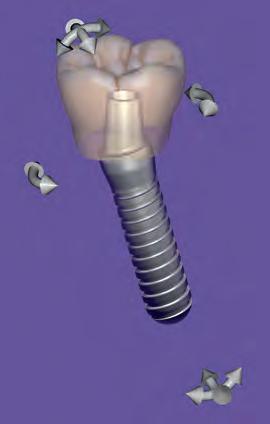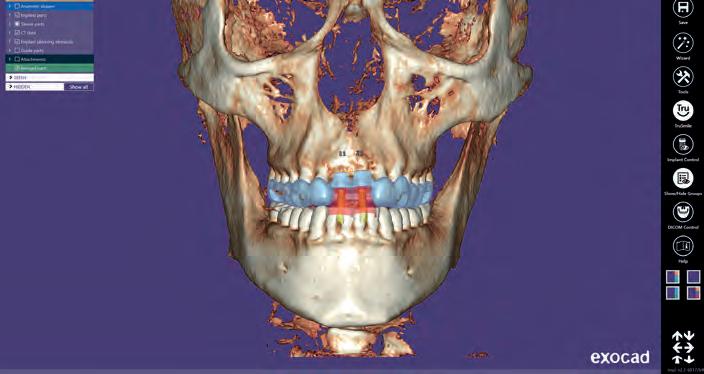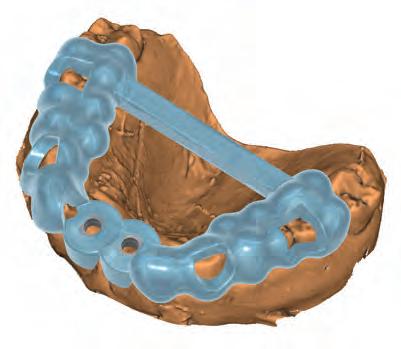
2 minute read
Implant Drilling Guides. By Dr Gulshan Murgai - Implant Solutions Direct
IMPLANT DRILLING GUIDES –
THE DIGITAL WAY
Advertisement
By Dr Gulshan Murgai BDS Dip Imp Dent RCS Ed. I Managing Director – ISD. I Lab Owner – 4D Ceramix I Clinical Director – Skin & Smiles
Implant dentistry is big business these days both for the dental practices that offer it and also the labs that support them.
Since I started placing implant 18 years ago a lot has changed on both the surgical and restorative side but more importantly the planning element aspects as well.
Back in the day we used to take impressions and ask a lab to create a diagnostic wax-up and then some kind of stent from that. If we were meticulous, the model would be duplicated and then one model would be sectioned through the area of interest.
Now, with the reduction in price of CBCT scanners and the increase in popularity of digital dentistry, many surgeons are asking their labs for drilling guides that are much more complex than the one described above. Why is that?
Well, at least in the UK, the level of litigation against dentists continues to soar. Many technicians will have seen cases they are asked to restore where it looks like the surgeon had one (or both) eyes closed when the implant was placed. The excuse always tends to be, “… I placed it where I could find some bone…”
With patients become savvier about implants, people will not accept mediocre results. They want implant teeth to look like real teeth and so they should. So, we bring to the stage, restorative-led implant planning with CBCT analysis. With this kind of planning and collaboration with a lab, surgeons can know whether they can deliver a particular type of implant restoration based on accurate CT analysis before they lift the scalpel. This can then be used to confirm or amend a treatment plan which can then allow the patient to have a good idea about the complexity and outcome of the case. For technicians it means that they should be getting cases that are less stressful to restore and look great.
Using CT scans to plan implants is not new and there are several packages on the market. One of the newest to the market, and now in its second-generation version, is exoplan from exocad.
With this product dental surgeons and dental technicians can accurately correlate intra-oral data taken from either an impression that is physical or digital and combine that with CBCT data. Once combined, this package allows for easy and accurate planning of implant placements and then the subsequent design and production of surgical guides for the accurate placement of those implants. Furthermore, the plan can then be used to facilitate immediate loading when used in combination with one of exocad’s CAD programmes.
Exoplan is a great addition to a lab that is already using exocad for design as many of the tools used are the same. The design of the surgical guide is amazingly easy, and fabrication is done using a 3D printer which many labs have already invested in.
To discuss any aspect of digital dentistry or to arrange a trail of exoplan please get in touch with us at Implant Solutions Direct.













